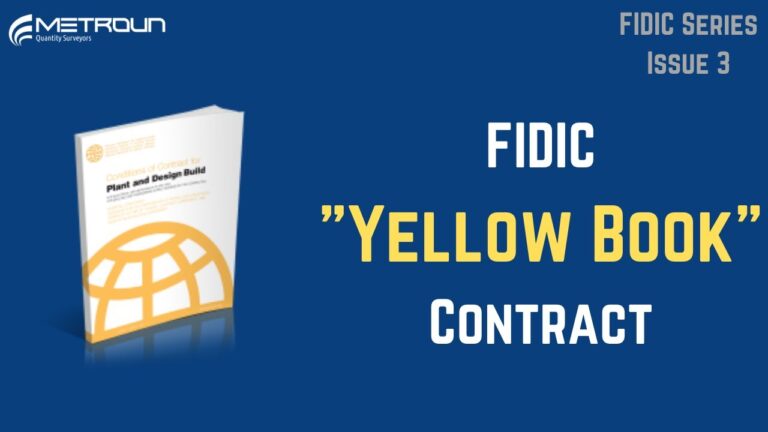In the UK, JCT contracts are the most commonly used within the construction industry, with the NEC form of contracts closing the gap from second place. However, on a global scale, FIDIC contracts still run the show. This may be because they’re suitable for parties of different nationalities, speaking different languages, and coming from different jurisdictions. In this video, we’ll be dissecting another FIDIC contract – the Yellow Book.
The Yellow Book, or to give it its proper title, Conditions of Contract for Plant and Design Build, was first published in 1999. The latest revision was published in 2017. The 1999 edition of the Yellow Book presented a balanced approach to risk between the employer and the contractor. This new addition moves more towards the Silver Book in terms of putting further risk onto the contractor. The basic nature is the same: a lump sum contract where the contractor designs and takes risk on quantities.
The Yellow Book is a recommended design-and-build document for projects where the employer wishes to protect their interests. In this contract, the employer will appoint an engineer to supervise the overall construction of the works. Usually, the contractor designs and provides, according to the client’s requirements, plant and/or other works, which may include a combination of civil, mechanical, electrical, and construction works. As with the Red Book in our previous video, the engineer is central to the contract in Clause 3.
The role of the engineer has changed from the 1999 version. Not only does the engineer’s assistant need to be fluent in the ruling language, but also the engineer himself. Administration of the contract and supervision of the works is carried out by an engineer who’s employed by an employer. The engineer is responsible, amongst other things, for issuing instructions, certifying payments, and determining completion. Interim payments of the lump sum contract price are made as works proceed and are typically based on installments specified in a schedule, similar to the NEC3 and the FIDIC Gold Book.
The FIDIC Yellow Book has introduced a provision in Clause 8 for early warnings, which was unseen in the original contract. Previously, an employer was only required to give notice and particulars of a claim to the contractor as soon as practical. The revision allows both the employer and the contractor to give notice of a claim within 28 days of becoming aware of the event.
Content of the Yellow Book includes General Conditions, which includes Clauses 1 to 21, Guidance for the Preparation of Particular Conditions, which includes Part A: Contract Data, and Part B: Special Provisions, Form of Tender, and Contract Agreement, which includes Letter of Tender, Letter of Acceptance, and Contract Agreement, and finally, the Dispute Adjudication Agreement.









